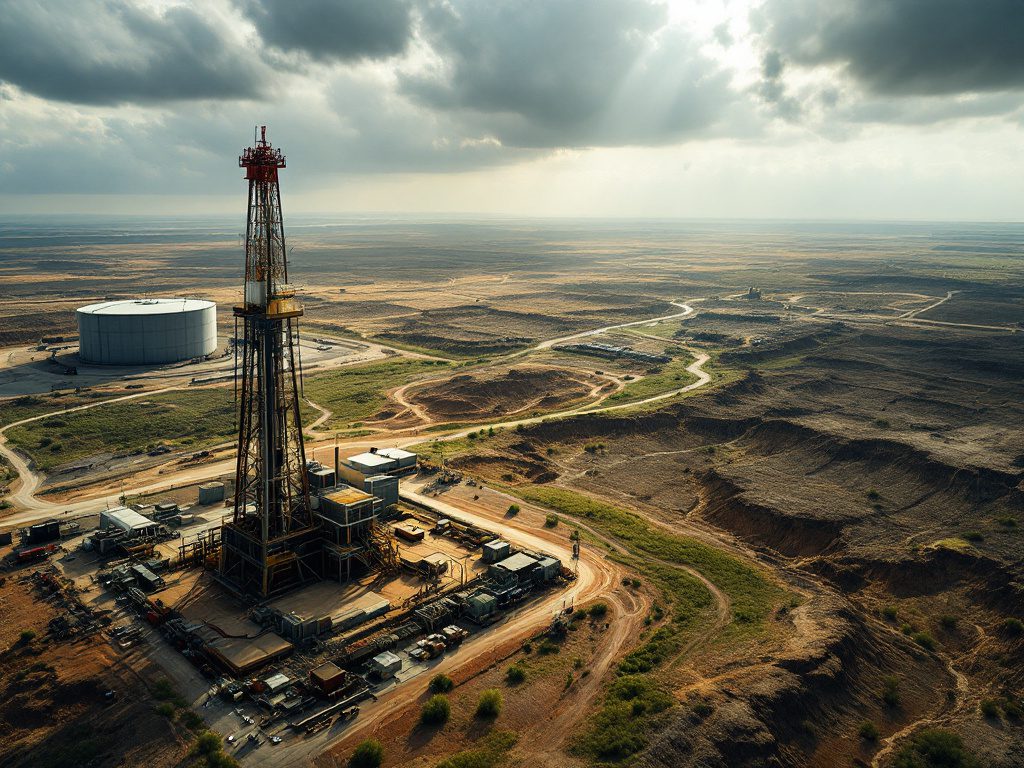Diamondback’s Warning: The Era of Relentless Shale Growth May Be Over
Picture the once-booming oil fields of the Permian Basin, rigs dotting the Texas horizon and fortunes rising on the promise of endless shale. Now imagine the air thick with anxiety, as Diamondback Energy, one of the region’s heavyweight independents, sounds an unmistakable alarm: the U.S. shale miracle may have quietly reached its peak. In a stark shift from the cheerful forecasts that defined the last decade, Diamondback has not only trimmed its production outlook for 2025 but is bracing for what CEO Travis Stice describes as an industry entering its mature phase—and perhaps even an impending decline.
The facts are clear, and they paint a sobering picture. In its latest guidance, Diamondback cut crude production expectations to between 480,000 and 495,000 barrels per day—a modest 1% decrease at first glance, but a symbolic step for a company that, like so many others, spent years betting on perpetual growth. The 2025 capital budget has also been slashed: $3.4 to $3.8 billion, down from their already-tightened forecast. By trimming three rigs and a completion crew in the second quarter alone, the company is sending the industry a loud message. “U.S. onshore oil production has likely peaked,” Stice declared, challenging the bullish consensus that stubbornly persisted across Wall Street analysts and oil market prognosticators until remarkably recently.
A closer look reveals multiple headwinds converging all at once. Oil prices—adjusted for inflation—are now brushing lows rarely seen since 2004, excluding the turmoil of the pandemic. Only two quarters in the last two decades have seen comparably meager returns. According to the U.S. Energy Information Administration, a confluence of surging OPEC+ supply, global economic caution, and a market glutted with uncertainty are pushing prices down, forcing U.S. producers to rethink their playbook on the fly. Diamondback isn’t alone in feeling the squeeze, but it is arguably the canary in the coal mine, with outsized influence on the industry’s direction.
The Great Shale Slowdown: Boom, Bust, and What Comes Next?
Shale’s story has always been one of volatility—a wild ride that’s catapulted U.S. oil output to the top of global charts while leaving local communities and ecosystems to bear the brunt. In recent years, the script changed. Capital discipline became the new mantra, with energy CEOs racing to assure nervous shareholders that countenancing breakneck expansion in the face of mediocre prices simply doesn’t make sense anymore. The Permian’s best drilling locations are running out. That’s the quiet truth lurking behind all the glossy quarterly reports.
Diamondback’s bold $26 billion acquisition of Endeavor Energy underscored a new reality: growth doesn’t just come from drilling anymore, but from consolidating what remains. As drilling inventory shrinks and only the most lucrative wells remain, the economics tilt further from expansion toward efficiency, buybacks, and—perhaps—corporate survival. Industry watchers at S&P Global Commodity Insights point out that much of the “resource potential” left in American shale is increasingly lower quality, more expensive to extract, and far less profitable in a softened market. As other producers follow suit, what will this mean for an economy and energy ecosystem that has built so many bridges on the promise of endless, cheap oil?
“If our industry cannot generate a competitive return at these prices, the only responsible thing to do is slow down activity and preserve value,” CEO Travis Stice said. “We cannot drill ourselves into prosperity in a down market.”
Beyond that sobering wisdom, Diamondback’s announcement signals a pivotal casualty: the narrative of boundless American energy dominance. Former President Donald Trump repeatedly claimed he could turbocharge U.S. fossil fuel production, but corporate behavior and global economics are now revealing the limits of that vision. Reports from the International Energy Agency confirm that short-cycle shale wells—so quick to produce, so quick also to decline—render U.S. output uniquely vulnerable to price shocks. As the industry pivots to fewer rigs and dropping crew counts, the era of “energy independence” appears less sustainable, replaced by a more nuanced, cautious calculation about long-term viability and risk.
Rethinking Energy Security and the Future of American Power
Behind the market headlines and rig tallies, a fundamental question is brewing: what does a U.S. shale plateau—let alone a decline—mean for energy security, electricity prices, climate policy, and the nation’s industrial heartland?
Policy debates often focus myopically on immediate consumer costs—but that’s not where the real consequences lie. The maturation (or exhaustion) of shale could be the best-case wake-up call for Democrats and progressives arguing for a responsible energy transition. If drillers cannot profitably maintain supply, the United States cannot afford a strategy rooted exclusively in fossil fuels. Harvard’s Dr. Meghan O’Sullivan, a renowned energy policy analyst, says the impending plateau will pressure policymakers to accelerate decarbonization efforts, invest in grid infrastructure, and incentivize renewables—simultaneously reducing vulnerability to global oil swings and tackling the urgent threat of climate change.
So where will the political winds blow? New York Times reporting illustrates how multibillion-dollar clean energy investments in solar, wind, and storage, especially in the American West, are already softening the blow. Despite the tired refrain that fossil fuels are America’s economic backbone, clean tech now dwarfs coal in employment and is catching up to oil and gas in high-growth states. The pragmatic realization—summed up by a new era that prizes resilience over raw output—means that forward-thinking leadership has never been more important.
Does this mark the end of the U.S. oil age? Hardly. But it’s an inflection point—and if policymakers seize it, they have the opportunity to write a new story that lifts up workers, protects the climate, and makes the country less beholden to the boom-and-bust cycles of commodity capitalism. The old social contract, built on the relentless pursuit of more, is ready for transformation.

